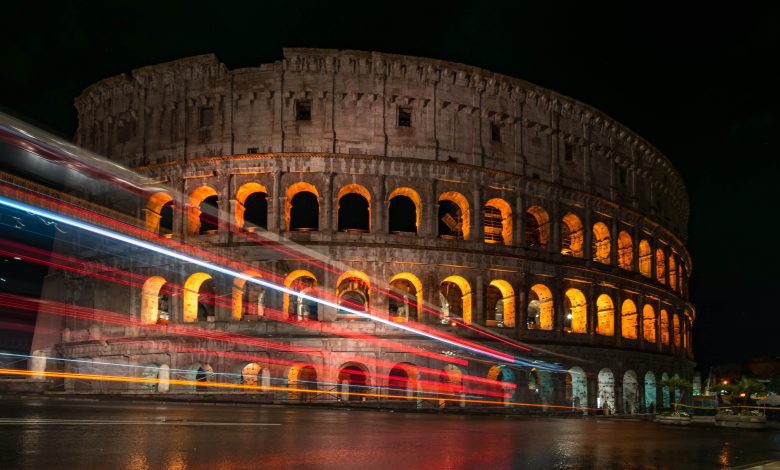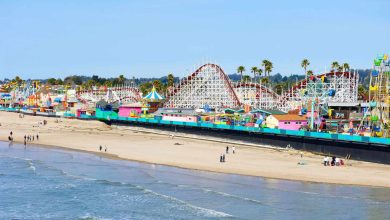20+ Awesome Things to Know About the Iconic Colosseum

In Ancient Rome, the Colosseum was a monumental Roman amphitheatre originally constructed in 70–72 AD. It became one of the largest and most influential stadiums in Roman history. The Colosseum was situated in the centre of the Roman city of Rome, near the Flaminian Circus.
20+ Interesting Things to Know About the Iconic Colosseum:
1. Three Entrances:
The Colosseum was composed of three entrances flanked by colossal towers and arches. The main entrance was called the Porta Capena, and the main arena was named the Arena of Romulus. It was also known as the Flavian Amphitheatre (after its original name, which may have been simply the Flavian Circus). The Colosseum gave its name to the so-called Colosseum Arena space.
2. Capacity of 50,000 Spectators:
The Colosseum can be seen from a number of miles away in Rome. It was built on the site of a former cemetery of Rome known as the Campus Martius. The Colosseum was so large that it could hold as many as 50,000 spectators at full capacity.
3. unique architectural features:
The Colosseum has a number of architectural features that are unique among amphitheatres, including side arches around three sides of the arena rather than flats; a central arch for access to the higher tiers and a primary ring for seats, whereas other amphitheatres have secondary rings for seating. This was located entirely inside the arena and contained a variety of marble statues and features to create the illusion of a gladiatorial school.
4. Colosseum’s design:
The Colosseum’s design, however, does not seem to have been inspired by any specific triumphal architecture such as the Roman Forum Temples or Trajan’s Column. It has also been suggested that Hellenistic buildings inspired elements such as curved arches in Alexandria, Egypt.
5. Triumph of Vespasian and Titus:
When the Colosseum was still partially constructed, spectacular “performances” took place to celebrate the Roman victory in the Second Punic War and honour three consecutive emperors: Titus, his father Vespasian and his brother Domitian. This event is known as the “Triumph of Vespasian and Titus.”
6. Roman National Monument:
Far from commemorating just one emperor, the construction of this building was ordered by the Senate to be a kind of Roman national monument for celebrating various triumphs. The Colosseum, thus, wasn’t built just for Titus to come and watch his son win. It was built for the whole Roman empire. The arena is a little bit smaller than the current piazza in front of the Vatican (about 250 metres square), which is one of the largest arenas in Italy.
7. Can Be Seen All Over Rome:
The Colosseum can be seen from various parts of Rome. For example, it can be seen from the Santa Maria del Popolo across the River Tiber. The Colosseum is so large that it can be seen all over Rome, even from towns across the river, such as Ostia.
8. One of the Seven Wonders of the Ancient World:
The Colosseum holds a record in the world of architecture. It has been called one of the Seven Wonders of the Ancient World. The architectural marvels such as Trajan’s Column, which was used as a building material for many of Trajan’s public construction projects, and Aqueducts are some examples of other wonders of Ancient Rome. Thousands of visitors worldwide take the Colosseum Tour and explore the ancient Roman empire.
9. Caesar’s Forum:
Caesar’s Forum, built in the 50s AD and located right next to the Colosseum, was destroyed by an earthquake between 8 and 10 am on September 3, 554. Some famous buildings, such as the Pharos of Alexandria and Trajan’s Column, were destroyed by earthquakes during this period.
10. Part of Roman Forum:
The Colosseum is part of a historical area known as the Roman Forum that used to be a marketplace where people could come and buy things. However, the Flavian Amphitheatre’s design hasn’t been inspired by any specific triumphal architecture, such as the Roman Forum Temples or Trajan’s Column. It has also been suggested that Hellenistic buildings inspired elements such as curved arches in Alexandria, Egypt.
11. Used As A Quarry:
The Colosseum was partly used as a quarry to build other monuments in Rome. Ironically, the same stones used by the Romans to build the Colosseum were used by the Bourbon kings and popes in 18th-century Rome for public buildings such as palazzo Farnese, Palazzo Chigi, and Fontana delle Ninfe near Trevi Fountain.
12. A Legend:
The Colosseum is not just any old ruin. It is also a legend. For example, there are many stories surrounding the Colosseum’s sword. Some say that a giant sword was hanging on the Colosseum that landed there when lightning struck its hilt. Others say that this same sword would shine in times of war.
13. Stone Carvings and Inscriptions:
The walls around the arena are enormous, and each one is covered with stone carvings and inscriptions. These walls are 48 metres high and 7.3 metres wide. These inscriptions are not pagan, though. They are all Christian and talk about the martyrdom of saints and the evils of paganism.
14. Triumph of Christianity:
The inauguration of the Colosseum was held on August 1, 80 AD. Several hundred thousand people came to Rome for this magnificent event that marked the point in time when Rome finally conquered Jerusalem in 70 AD after a siege that lasted for one year. The day was named “Revenge of the Christians” and “Triumph of Christianity.”
15. Used in A Television Movie:
The Colosseum was used in the television series Rome. The much-anticipated Colosseum was also used as a filming location for one of the most popular action movies, Gladiator. The movie took scenes, characters, and sets from this famous building to make it more realistic.
16. Centre of All Gladiatorial Activity in Rome:
The Colosseum was the centre of all gladiatorial activity in Rome. Many gladiators would come dressed and ready to kill for the main ceremonies. The arena featured a complex labyrinth of underground tunnels, and incubation areas were used by promoters, fighters and even animals in their travel to the Colosseum.
17. Largest Amphitheater:
The Roman Empire was one of the largest empires known to man. The Colosseum was declared the largest amphitheater in the world at its time. This becomes clear as you walk through the enormous main entrance into the Colosseum.
18. Most Luxurious Buildings in Rome:
The Colosseum was built around 70 AD. Many considered it one of the most luxurious buildings in Rome, and it used to be known as one of the Seven Wonders of the World. Many of the greatest emperors owned some of the seats inside the Colosseum. From Julius Caesar and Mark Antony to Vespasian, Titus, Domitian and Trajan, many Roman rulers were famous for owning seats in the Colosseum.
19. Built On A Slope:
The Colosseum is built on a slope. This makes it possible for people from all walks of life to sit in front of it without leaning too much. This also prevents the Colosseum from getting damaged too fast.
20. Huge Capacity:
The Colosseum could hold up to 50,000 spectators at a time. The capacity of the venue was temporarily expanded in 80 AD when it was used as the venue for 200 gladiators who fought over who would become emperor of Rome. It was also used to hold a re-enactment of Julius Caesar’s famous battle against the famous hero Pompey.
21. Marvel of Roman Architecture:
21. The Colosseum is truly a marvel of Roman architecture. This venue, which is considered to be the greatest theatre that was ever built, was completed during the reign of Emperor Vespasian in 80 AD. It has gained so much fame since then that it has been listed as one of the New Seven Wonders of the World.
The Colosseum is one of Rome’s biggest tourist attractions.
The Colosseum, one of the largest amphitheater ever built, is a must-see attraction in Rome. This is especially true for visitors of all ages who want to learn about this magnificent monument and watch one of the most famous movies in the world, Gladiator. You can also take Colosseum Tickets to skip the long awaiting queues. The Colosseum also plays an important role in many other television shows filmed in Rome.






